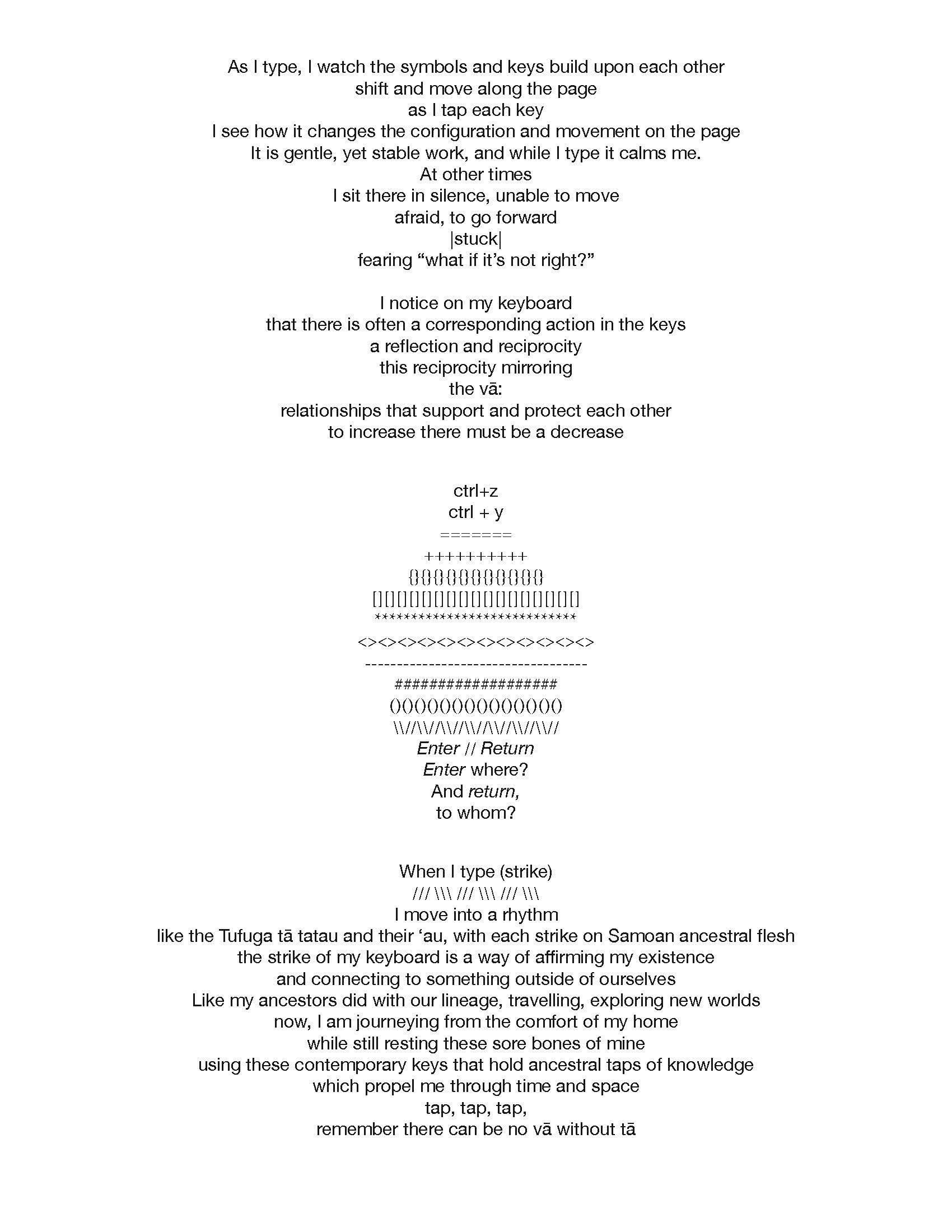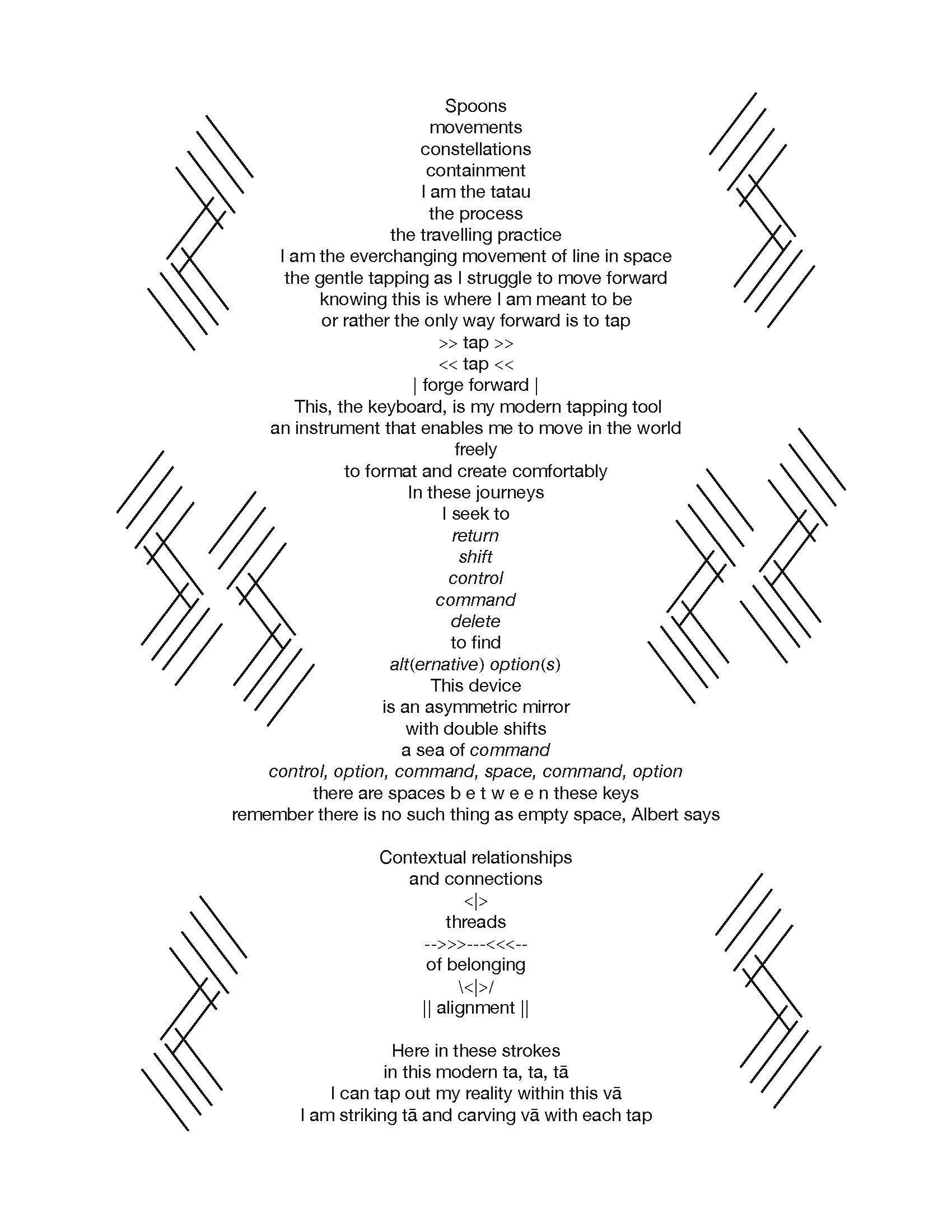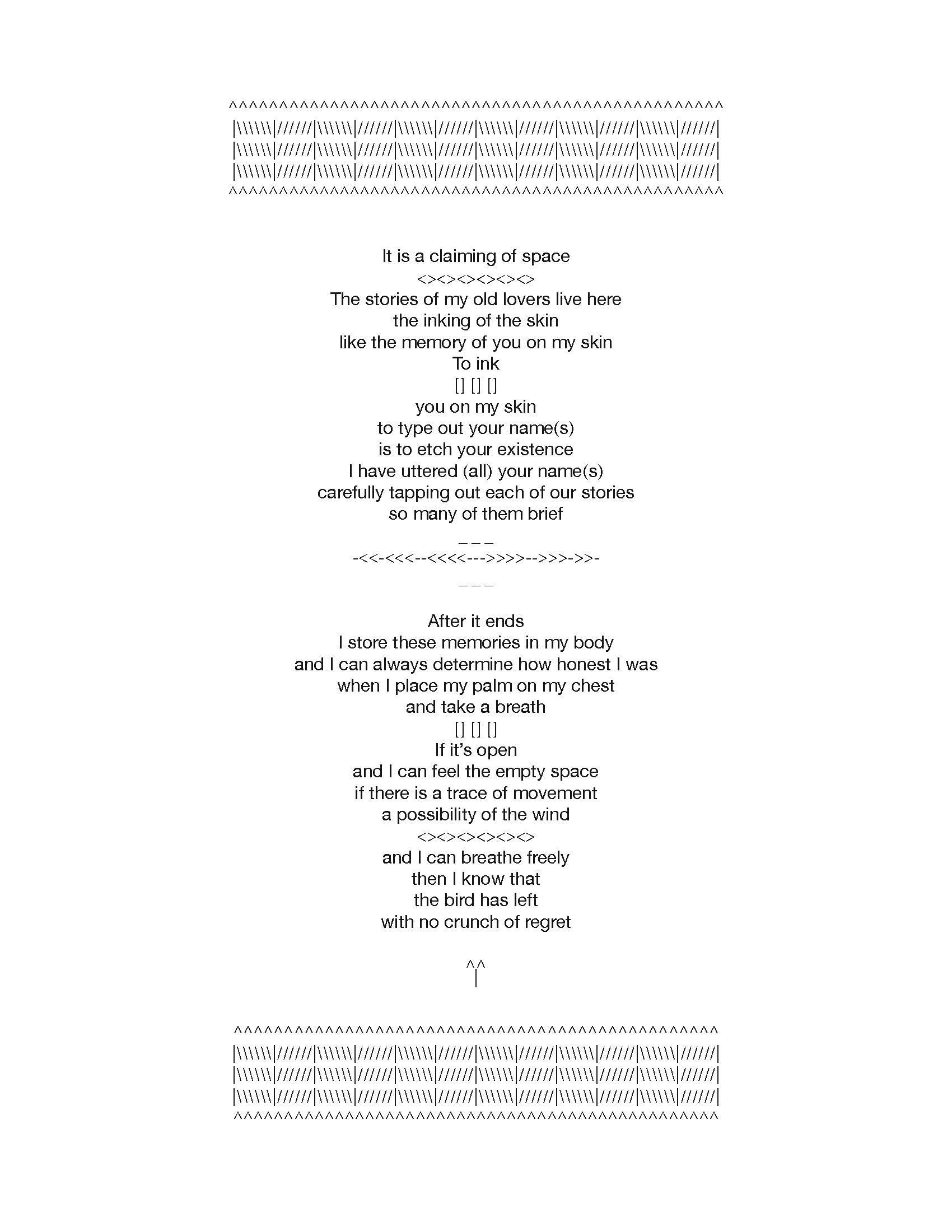A Travelling Practice
Created June 2018
First published in Movement Research Performance Journal, Issue 52/53, Fall 2019
Exhibited in Talk Back, Flux Factory, 2019
Republished in Out Here: An Anthology of Aotearoa, 2021
Provocation
A Travelling Practice looks at the Samoan design principles and ancestral knowledge held within the landscape and context of the contemporary keyboard. The keyboard becomes a crossover site that intersects my many identities and art forms, as well as becoming a tool for freedom and creativity of expression.
As a disabled artist working within crip time, the power of movement that I can achieve through my keyboard and the liminal space of the internet is integral to help me connect, create, and facilitate my artistic practice. With this work I wished to expand what is considered movement and explore the specific choreography of the keyboard, both physically and conceptually and ask, how can one move without moving?
I focused on the small movements created in this contemporary landscape and how it invokes Samoan concepts. The keyboard is set up with a pre-existing set of relationships, from the keys that most peo- ple know and understand, and each movement, each tap, no matter how small, is a powerful propelling forward through time (tā) and space (vā). Using the Samoan framework of the vā* or spatial relationships, I analyzed the relationships of the keys, using the concepts already on the console to think about move- ment. Looking at the relationality of the keys of the keyboard, I realized many of the characters in the keyboard reflect many of the symbols of the Samoan tatau (tattoo); specifically, the malu, traditionally worn by women. I was fascinated to see that in this modern technology there is this ancestral knowledge in plain sight. I wanted to connect the two in my use of text and visual images and explore what do some of these movements look and feel like, and how is this reflected in the Samoan tatau.
Tatau has continued to evolve and today it is still a significant and an important marker of identity es- pecially within communities of the Samoan diaspora. Artist, tatau practitioner, and scholar, Tyla Vaeau Ta’ufo’ou defines tatau as a travelling practice and connects tatau to the wider movement of Samoan people both historically and in contemporary forms in her thesis, Fa’avaetuli: Like the Feet of Tuli >>> Samoan Tatau as a Travelling Practice. With her permission and with much alofa ma fa’afetai tele lava,
I have used her title as I similarly applied this spirit of exploring tatau as a movement practice in itself, through space and time, and the malaga (journey) I have taken both physically and conceptually to create this work.
This work connects to my wider multi-disciplinary practice as it explores the quiet intersections between race, disability, immigration, decolonization, and aesthetic.
*To learn more about the vā, please read Albert Wendt, “Tatauing the Post-Colonial Body,” originally pub- lished in Span 42-43 (April-October 1996): 15-29.







